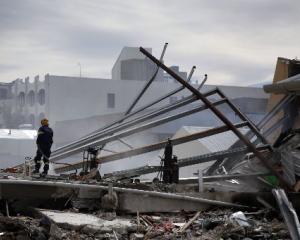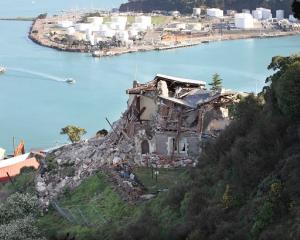The Christchurch earthquakes laid waste a city of heritage and character. They not only destroyed homes, land and infrastructure, but also shattered many historic city buildings. The fear now is that, even without the earth shaking, heritage buildings around the rest of the country will be hit.
The proposed national earthquake rules could cost communities from Timaru south close to $2 billion, according to a report officially released by the Southern councils yesterday.
Under the plans, first would come a requirement for local authorities to receive or carry out seismic capacity assessments on all non-residential and multi-unit, multistorey residential buildings, within five years of when the new policy takes effect.
There would then be a year for the submitting of strengthening or demolition plans, and property owners would have 10 years to carry them out. For Central Otago alone, estimated figures for assessments are $2 million and for strengthening work $155 million. Quite simply, this will be too much and too fast.
In many cases, particularly because most of the towns and cities of the South are growing slowly if at all, it will be uneconomic to do anything with buildings that fail to meet the required standards. And that will mean widespread demolition, either through the demolition ''plans'', or by being left to deteriorate, demolition eventually by neglect. And what will happen when demolition of older buildings in struggling parts of towns is too costly for the owners? Will they just be abandoned?Dunedin, where the estimated total costs - at $600 million - will make the stadium look cheap, was formulating policies before the earthquakes struck.
These proceeded last year and will be enormously difficult for churches, other voluntary organisations and many businesses to meet. But, at least, the time periods are longer and the scope and standards not as strict. If building strength is less than 34% of the new building standard, for example, owners will be given between 15 and 30 years to upgrade to at least that level. And while that might sound like a relatively long time, it will come soon enough.
The South could well be struck by a significant earthquake, and lives could be lost. For these reasons, the hazards cannot be ignored. But an overreaction to Christchurch's devastation would be ill advised and ill-affordable.
For a start, it should be recognised that earthquakes such as February 22, 2011, are likely to be extraordinarily infrequent, that quake being listed by the Institute of Geological and Nuclear Sciences as a 1:2500-year event.
Despite that, and the phenomenal forces at work, almost all buildings did not collapse completely. In this tragic event, of the 185 people killed, 133 were in two buildings, the CTV and PGG structures, and neither was particularly old.
Most unreinforced masonry buildings, like those along Colombo St, while devastated, did not fall down. Tumbling facades and debris killed about 40 people. Five people actually inside such buildings died.
The South does have literally hundreds of unreinforced masonry buildings, usually the most vulnerable. With its longer European settlement and former wealth, it will be affected most by these one-size-fits-all policies promulgated from Wellington rather than arising from local communities. In the unlikely event of a massive quake, it would be well-nigh impossible to protect most heritage stock, even if billions of dollars were spent. Christchurch showed no building can be completely protected from damage. However, susceptible buildings can be protected from total collapse, and facades, decorations and parapets secured for reasonable cost.
The realistic focus should be on what can be done to save lives rather than buildings. Risk is inherent in life and cannot be eliminated - so it is a matter of what degree of risk southern communities are prepared to accept. What is required is a balancing of safety, cost, heritage values and liveable risk.






